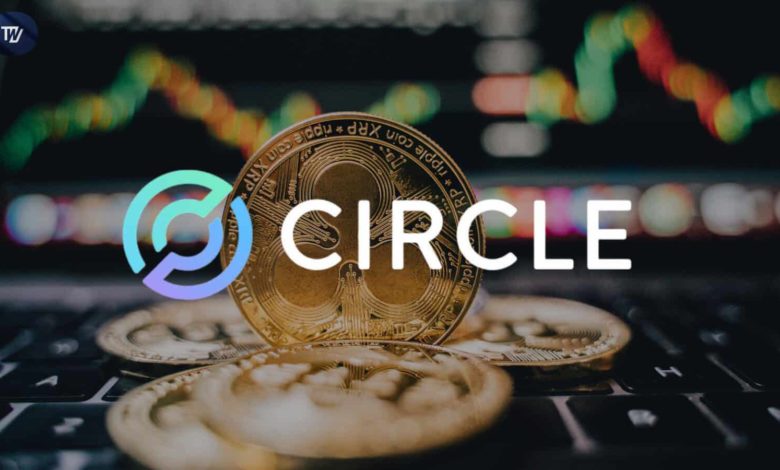Circle’s IPO Triggers ETF Surge as Crypto Enters Mainstream Investment Landscape

Circle Internet Group, the issuer of USDC (the second-largest stablecoin), has fueled a frenzied interest on Wall Street following its highly anticipated IPO. After Circle went public, the company saw its shares soar, tripling in value within only hours, and capturing the attention of both retail and institutional investors. This wild debut is not only a significant moment for the crypto industry but also showcases the growing intersection between traditional finance and digital assets.
As a result of this impressive debut, several financial firms have rushed to launch exchange-traded funds (ETFs) designed to capitalize on Circle's stock momentum, establishing a new chapter in the rapidly changing world of crypto-backed financial products.
The Surge in ETF Proposals
The excitement surrounding Circle’s IPO caused a flurry of activity in the ETF market. Within days of Circle’s debut, at least three firms—Bitwise Asset Management, ProShares Advisors, and T-Rex 2x Long—filed to launch new ETFs based on the company's stock. These products aim to provide exposure to Circle’s performance, with some using leveraged strategies to amplify returns. The Bitwise ETF, for example, utilizes a covered call strategy to generate income, while the ProShares and T-Rex ETFs offer leveraged exposure to Circle's daily price movements, doubling their investors’ potential returns. These filings underscore the intensity of competition in the U.S. ETF market, which now boasts over 4,200 products, many of which are dedicated to digital assets.
Crypto’s New Role in Traditional Finance
Circle’s IPO comes at a time when crypto assets are gaining increasing legitimacy in the world of mainstream finance. The company’s business model is particularly attractive to investors because it is not purely a crypto play. Circle’s revenue is mainly derived from yield on US Treasuries and other safe assets that back its USDC token, making it more similar to a financial institution than a typical cryptocurrency firm. This stability has made it a standout in a sector where many companies, such as Coinbase, rely heavily on volatile transaction fees. Circle’s dual role as both a crypto firm and a stable, yield-generating entity has positioned it as a promising investment in a space that has been traditionally associated with high risk.
A Surge in Speculative ETFs
The rush of new ETFs targeting Circle’s stock highlights the hunger for speculative investments in the digital asset space. These ETFs are often designed to cater to high-risk, high-reward traders eager to capitalize on the volatile swings of crypto-related equities. Leveraged ETFs, in particular, have become quite popular, allowing traders to take more aggressive positions with the potential for amplified returns. This trend shows a broader shift in the market, where retail investors are increasingly drawn to higher-volatility assets. As single-stock ETFs—especially those related to digital currencies—become more common, the competition between issuers will only intensify.
The Growing Influence of Stablecoin Legislation
While Circle's IPO has been an overwhelming success, the company’s stock experienced a dip earlier this week, falling as much as 10%. This decline comes ahead of a crucial vote on stablecoin legislation, which could have far-reaching consequences for Circle and other companies in the sector. The bill, which is backed by the crypto industry and President Trump, seeks to provide clearer regulations for stablecoins, potentially altering the landscape for digital assets. Circle, as the issuer of USDC, stands to benefit from favorable legislation, and any progress on this front could reignite investor enthusiasm for the stock.
Impact on the Broader Crypto IPO Landscape
Circle’s IPO has raised expectations for a broader wave of crypto-related IPOs. Companies like Gemini and Blockchain.com have already begun to position themselves for potential public listings. With the crypto sector gaining more mainstream traction, these upcoming IPOs could spark a new era for digital asset companies in public markets. The success of Circle’s IPO will likely serve as a blueprint for other firms looking to follow in its footsteps, further fueling the momentum in the crypto-finance intersection.
Looking Ahead
As Circle continues to gain attention, both the stock and the crypto industry will likely face greater scrutiny from regulators. The impending vote on stablecoin legislation is a pivotal moment that could influence not only Circle’s trajectory but the future of the entire sector. For investors, the key question will be whether the surge in interest from ETFs and institutional investors will be sustained or if the volatility of digital assets will once again dampen market enthusiasm. Regardless, the Circle IPO has clearly ignited a new phase in the intersection of crypto and traditional finance, with the potential for more ETFs, IPOs, and innovations to follow.




